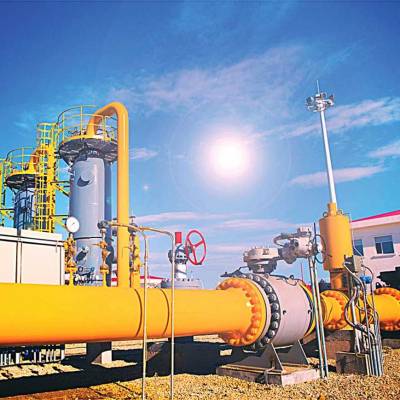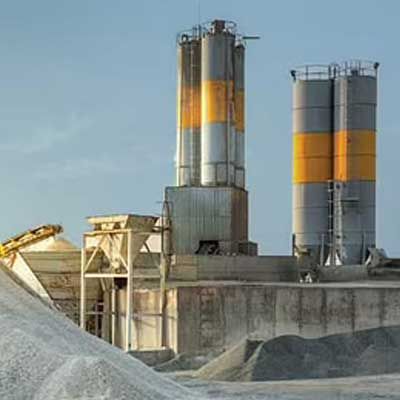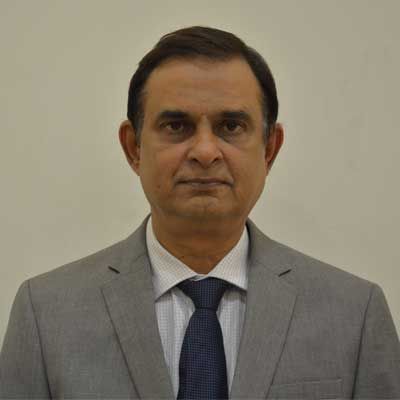- Home
- Real Estate
- Building on SCM
Building on SCM
<span style="font-weight: bold;">K RAJARAMA RAO</span> speaks on how supply chain management in the construction industry has evolved over the last decade. <p></p> <p> The discussion on supply chain management (SCM) in construction has been developed in isolation from industrial engineering based on two reasons. </p> <p>First, construction management has unique characteristics related to its nature. It is difficult to determine the type of project to be bagged and no planning can be done until then. Hence, in terms of raw material usage, it is difficult to standardise the requirement as well. </p> <p>Thus, quantitative and modelling studies are not easily applied within the construction environment owing to its complexity.</p> <p>Second, since construction projects are of varied kinds, it is impossible to maintain the same suppliers, contractors and developers across jobs; thus leading to lack of integration. Integrated efforts are crucial to not only deliver better projects to final customers but reduce waste and promote cost reduction throughout the supply chain.</p> <p> <span style="font-weight: bold;">Competition between supply chains </span><br /> </p> <p>India is a growing economy. <br /> In the past decade and a half, the government's emphasis on infrastructure growth - from roadways to airways, ports to airports, power and the telecom sector - has given global companies the opportunity to venture into the Indian construction industry. This has also helped local firms evolve into full-fledged national players. </p> <p>The entry of global construction companies and emerging domestic companies is creating stiff competition in the construction industry. Foreign players are believed to have greater technological expertise, deeper pockets and more extensive experience. This has given domestic players the opportunity to upgrade their construction technology, tighten SCM to control costs, and stay in the race. </p> <p>In the construction industry, supply chain costs are very high; they may even touch 90 per cent of sales - for example: Electrical jobs, where the supply portion is high compared to labour costs. Thus, of late, companies have started focusing on improving SCM by adopting proven methodologies. Hence, competition is no longer between companies; it is between supply chains.</p> <p> <span style="font-weight: bold;">Significance of materials</span><br /> In a manufacturing setup, the profit is predetermined as the final price is fixed. Cost + Profit = Sales Price.</p> <p>Whereas, in the construction business, the profit is dependent on cost, Sales - Cost = Profit.</p> <p>Hence, it is essential to control cost to achieve the bottom line.</p> <p>In SCM, inventory management is a challenging job; there are conflicting views on this - whether to have an inventory and if so at what level, etc. Inventory levels depend on the geographical location of the project site. </p> <p>In some areas, if the lead time to arrange the materials is too much, it is necessary to maintain a good volume of inventory for smooth running of activities. </p> <p>Lately, SCM professionals have devised methods to control inventory holding at project sites by adopting proven practices, such as:</p> <ul> <li><span style="font-weight: bold;">JIT: </span>Just in time</li> <li><span style="font-weight: bold;">VMI:</span> Vendor-managed inventory.</li></ul> <p>To be successful in the above methods, strong planning and close coordination between the project team and vendor is mandatory.<br /> Inventory management and extended vendor credit will enhance better working capital management and cash flows. <br /> In a liquidity crunch situation, extended vendor credit is managed by vendor financing.<br /> Now, big construction companies are adopting MARPA (master accounts receivable purchase agreement) schemes offered by many foreign banks, such as Citibank, JP Morgan, BNP Paribas, etc, for vendor financing to overcome the liquidity crunch. <br /> In banking parlance, MARPA is called a factored scheme, wherein the bank will buy the receivables from the vendor and collect the same from the purchaser at a later date with nominal interest. The beauty of this scheme is that it will not impact the balance sheets of the purchaser or vendor, thereby safeguarding their credit rating. <br /> Of course, eligibility for this scheme depends on the strength of the balance sheets of both the supplier and purchaser. <br /> </p> <p>To improve the supply chain process and make procurement strategies, spend analysis is a major tool. The outcome of the spend analysis will help supply chain professionals decide on the categories to be covered under MoUs, annual rate contracts, etc.<br /> Memorandums of understanding: MoUs will be signed for categories like steel and cement. These create a win-win situation for both, as the supplier gets a quantity commitment and the customer gets annual turnover discounts (TOD) and sometimes extended credit facilities.</p> <p><span style="font-weight: bold;">Annual rate contracts: </span>Annual rate contracts are normally signed for categories that are required frequently and have substantial value and volume. Some items like shuttering plywood, safety items, welding electrodes, electrical cables, paints, etc, are covered under this.</p> <p><span style="font-weight: bold;">Fixed discounts on price lists: </span>Categories like sanitary items, plumbing items, electrical switches, spare parts, small tools, power tools, welding machines, etc, will have standard price lists. Depending upon the volume, they will offer a certain discount that will be fixed for one year. This will help faster processing of requirement as commercial terms are already fixed.</p> <p>Technological advancement in telecommunication has made global sourcing simple. Imports from low-cost countries like China, CIS countries, etc, help construction companies control cost. <br /> </p> <p>Now, the focus is shifting from comparison-based negotiations to strategy-based ones. Vendors are considered as business partners and new trends like bid support, pre-bid tie-ups, long-term fixed price contracts, etc, are emerging. Shortage of skilled labour is also offering the opportunity for greater automation of activities at project sites, like steel service centres, plastering machines, new trends in shuttering, and so on.</p> <p> <span style="font-weight: bold;">New era: </span>One tax, one nation!<br /> The introduction of GST is a welcome step for the construction industry as all taxes and surcharges are subsumed into one tax. This will definitely give some relief to SCM professionals, as a large number of forms are no longer needed.</p> <p>Some important points must be considered with regard to the GST regime:<br /> Minimise or avoid purchase from unregistered vendors to avoid the additional burden of GST payment by purchaser through RCM.<br /> While negotiating for high-value, long-lead items, keep in mind the impact of interest or locking of funds owing to upfront payment of GST on advance payments.<br /> Close coordination with suppliers and subcontractors for compliance on timely submission of returns with accuracy will enable claiming ITC and avoidance of penalties.<br /> Care should be taken in interstate transfer of capital equipment, as every movement requires raising an invoice and payment of IGST, wherein the fund will be locked until ITC claim or setoff.</p> <p> <span style="font-weight: bold;">In conclusion</span><br /> Construction is a productive process that has various and complex interfaces between participants; many problems have originated because of the lack of coordination between these participants. SCM provides several principles to address this fragmentation and reduce it. </p> <p>Even though SCM in the manufacturing industry has been widely researched and developed, the application of these same principles to the construction industry shows waste, and problems in construction supply chains are extensively present and persistent.</p> <p>Some major benefits construction organisations can achieve by applying SCM principles are: Reduced real costs, maintenance of margins, incentive to remove waste from the process, competitive advantages, greater certainty of the overall project cost, delivery of better underlying value to the client, on-time delivery, productivity improvement, value creation, more repeat business with key clients, greater confidence in longer-term planning, and better relationships between parties. The benefits for end-users and project clients include a more responsive industry delivering facilities that better meet user needs, delivered to time and cost.</p> <p> <span style="font-weight: bold;">Why Inventory is Required?</span><br /> </p> <ul> <li>Balances supply and demand</li> <li>Provides protection against uncertainties in demand and order cycle</li> <li>Provides lead time at various stages of procurement and production</li></ul> <p><span style="font-weight: bold;">About the author: <br /> K Rajarama Rao,</span> Chief General Manager-Materials, NCC, is a seasoned supply chain expert in the construction industry with over 30 years of experience.<br /> To share your views on this article, write in at feedback@ConstructionWorld.in<br /> </p>
























